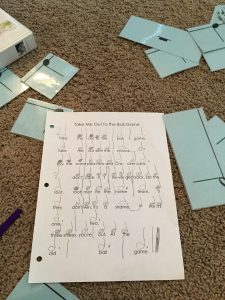Students really love this activity which takes 15 – 20 minutes.
- Sing the song
- sing the song and talk about the meaning and/or historical context
- Map out the rhythm (rhythmic dictation)
- measure by measure: decipher the rhythm to the song using the Music Mind Games® Blue Jello Puzzle™ or Real Rhythm Cards™
- write the rhythm of the song over the song lyrics in Kodaly stick notation
- Map out the solfege syllables (melodic dictation)
- listen to a few notes at a time of the melody played on the piano (no peeking)
- write the notes in solfa syllables by the rhythms
- play the song on the piano from beginning to end while singing the syllables
- play the song on the piano while singing the words to the song
Benefits of Learning Folk Songs by Ear
- develop in tune singing
- recognize common musical patterns
- understand and internalize complex rhythmic patterns
- favorite songs can be elaborated upon as the student progresses (adding verses, harmony, etc)
- students are motivated to play the songs because they are real songs!


